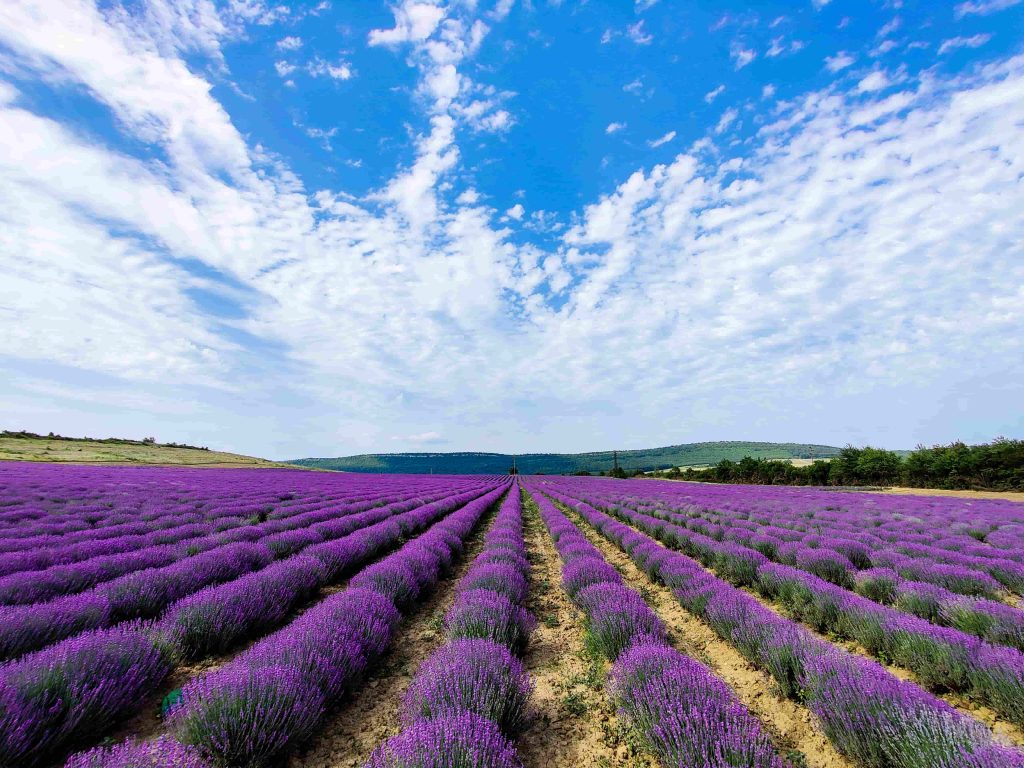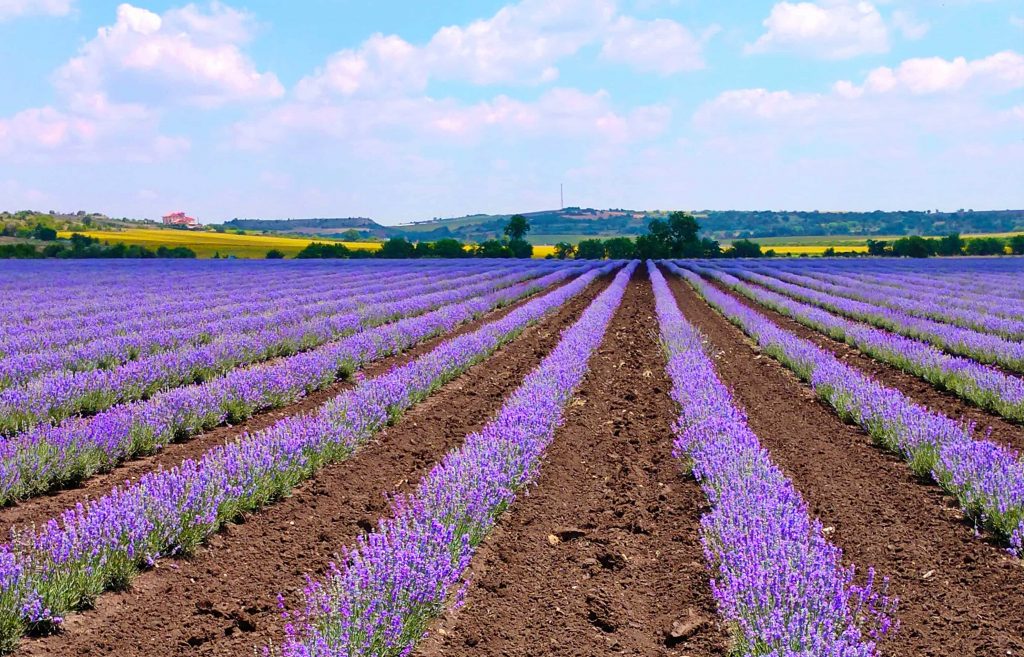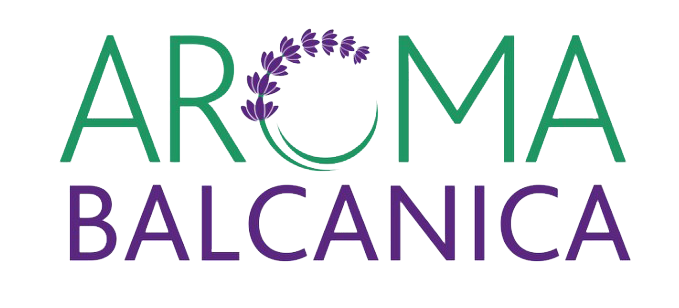Our fields are located in Eastern Bulgaria, near the valley of Kamchiya river. They are made up of 4 Bulgarian lavender species – Hemus, Hebar, Sevtopolis and Jubilee, each possessing unique qualities and demanding specific treatment (Georgiev et al., 2007). Notably, research has highlighted the outstanding chemical qualities of species Hemus and Hebar (Konakchiev, 2015) and their importance for the natural diversity of lavender species in Bulgaria. These are the two primary reasons we have chosen to dedicate over 80% of our land to cultivate the lavender species Hemus and Hebar. As a recognition for our commitment, we have been certified a variety-maintaining company by the Agency of Plant Testing, Approbation and Seed Control, giving us exclusive rights to produce and sell accredited seedlings for the two lavender species.

Variety Hebar
Qualities:
Lavender oil has been known to have both therapeutic and industrial qualities, often used in the pharmaceutical, cosmetic and wellbeing industries as a base ingredient. For example, aromatherapy with lavender oil was found to improve the health-related quality of life of patients with Fibromyalgia (Ozturk and Bashan, 2021), improving both their physical and mental health. Moreover, aroma treatment with lavender oil has also been reported to lead to improved quality of sleep and reduced fatigues levels, often experienced by students (Kavurmaci et al., 2021). As an industrial commodity, lavender oil is an important source of sweet, floral flavors in the food industry (Gouin, 2004). It is also valued by the cosmetic industry for its pleasing aromas and efficacy as a natural preservative (Wells et al., 2018).
Overall, the significance of lavender oil stems from its unique chemical composition and natural qualities. This is why we focus on QUALITY, rather than QUANTITY, as proven by our selection of lavender species and treatment of our lavender with minimal usage of non-organic compounds to preserve its natural qualities.

Variety Sevtopolis
Locational advantage:
The quality and quantity of lavender oil is largely impacted by both the climate and soil conditions. Research has indicated that lavender tends to perform poorly in acidic soils (pH<7) and thrive in alkaline soils (pH>7) (Stoyanova et al., 2009). The soil profile of our fields is characterized as alkaline (pH >7) according to research carried out by the Bulgarian Academy of Sciences, predisposing our lavender to flourish. Moreover, the climate in Eastern Bulgaria tends to be warm and moderately dry, providing our lavender with the perfect climate and temperature conditions to develop.

Lavender Cultivation – from Seedlings to Essential Oil
Seedlings
Our team’s experience and unique know-how allow us to produce the highest quality lavender seedlings. Since they are cut from the field plantations, the plants are treated by professionals with utmost attention and care. A controlled environment, provided with calculated quantities of water and nutrients, facilitates the crops’ proper nourishment.
Early Stages
The fields are prepared using a special technique and the seedlings are transplanted. Manual care is provided to each and every crop, providing the necessary conditions for the seedlings to attach properly. Weed is periodically removed from the fields by hand to ensure that the young lavender crops remain undamaged and the variety is preserved.
Harvesting and Distillation
For the harvesting of our lavender, we utilize mechanical harvesters which minimize the possibility of damaging the plants. It is extremely important not to overcut the crops, as their structure is intricate and can easily be damaged. This is why our team is made up of individuals with years of experience in navigating agricultural equipment. After being harvested, the plants are transported to our steam distillation facilities where essential oils are extracted. The process of steam distillation is led by skilled technologists which have the knowledge and experience to navigate the process in the most efficient way.
Post-treatment of Oils
After distillation, the oils undergo a dehydration procedure with the aim of quality preservation during storage. All of our oils are stored in stainless steel containers which are placed in a controlled temperature and humidity environment.
References:
- Ozturk, G and Bashan, I. 2021. The Effect of Aromatherapy with Lavender Oil on theHealth-Related Quality of Life in Patients with Fibromyalgia. Journal of Food Quality. v. (2021).
- Kavurmaci, M., Sariaslan, A. and Yildiz, I. 2021. Determination the effects of lavender oil quality of sleep and fatigue of students. Perspectives in Psychiatric Care. 58(3). pp. 1013-1020.
- Wells, R., Truong, F., Adal, A., Sarker, L. and Mahmoud, S. 2018. Lavandula Essential Oils: A Current Review of Applications in Medicinal, Food, and Cosmetic Industries of Lavender. Natural Product Communications. 13(10). pp. 1403-1417.
- Gouin S. 2004. Microencapsulation: Industrial appraisal of existing technologies and trends. Trends in Food Science and Technology, 15, 330–347.
- Georgiev, E., Balinova-Tsvetkova, A. and Hristova, P. 2007. Influence of Some Technological Factors on the Yield and Quality of Lavender Oil. University of Food Technologies – “Plovdiv”. 5(1): 275-280.
- Konakchiev, A. 2016. Essential Oils from the LAVANDULA ANGUSTIFOLIA MILL. Species and species of ACHILLEA L. family. Institute of Organic Chemistry with Centre of Phytochemistry.
- Stoyanova, A., Balinova-Tsvetkova, A. and Georgiev, E. 2009. Lavender. Production of Essential Oils in Bulgaria. 7D Agency. Plovdiv
